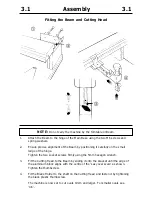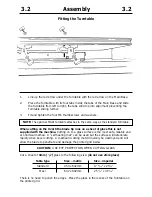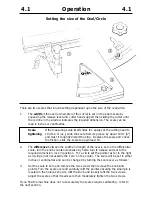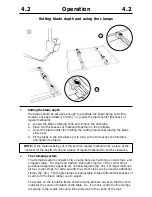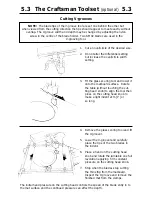
2.
Penlining
Embossing an indent before drawing the penline provides a smooth surface for
the ink, prevents bleeding and ensures a reliable alignment for the pen. For most
lines the thin half round embossed indent is appropriate, for a very thick pen use
the broad flat embossing tool.
2.1
Ensure that the pen is drawing freely with no excess ink and that it is
accurately clamped in the pen holder. The tip should protrude 5-10mm
[
1
/
4
” to
1
/
2
“] below the bottom of the holder.
2.2
Do not change the width or differential settings after producing the
embossed indent.
2.3
Place a small sheet of thin paper on the mat so that one clean edge is
across the embossed line. Lower the pen until the tip is on the paper about
8cm [3”] from the paper edge.
2.4
Do not touch the cutting head knob at all - gravity is quite sufficient.
Rotate the turntable whilst holding the paper to align the pen tip.
2.5
The pen will run off of the edge of the paper and into the embossed indent.
Rotate the turntable slowly and consistently for at least two turns removing
the paper but do not stop turning.
2.6
Lift the pen whilst the turntable is still moving and twist the cutting head
knob to park it.
5.2 The Craftsman Toolset
(optional)
5.2
Penlining




